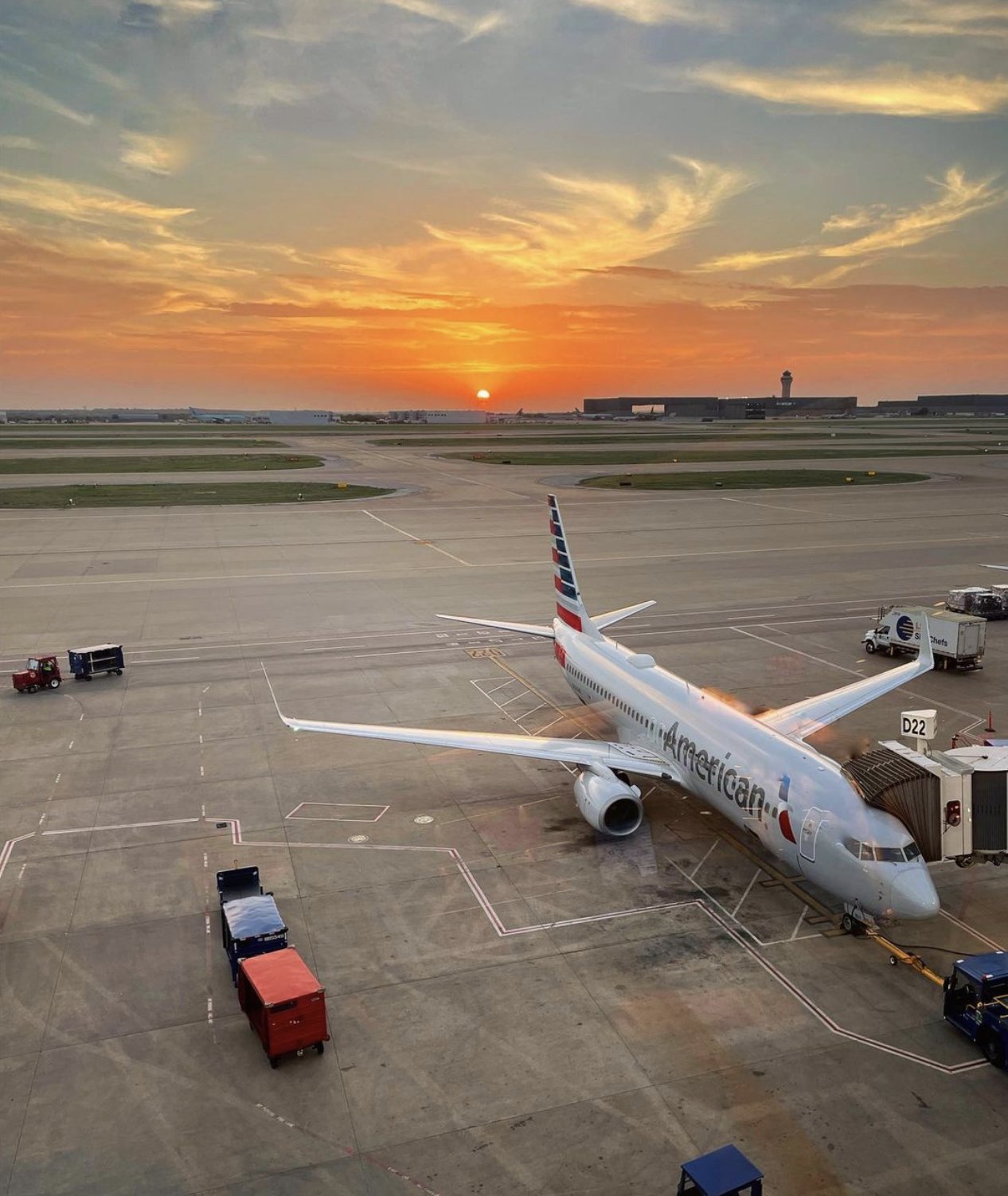American Airlines Group reports second quarter net income of $476 million World Airline News
American Airlines Group reports second quarter net income of $476 million World Airline News
American Airlines Group’s Second Quarter Net Income Report: A Comprehensive Analysis
American Airlines Group (AAG), a titan in the aviation industry, recently reported its financial performance for the second quarter, showcasing a net income of $476 million. This announcement comes as a beacon of resilience and recovery in an industry that has been battered by the COVID-19 pandemic. Let’s delve into the details of this financial performance, examining the factors that contributed to these results, and exploring the broader implications for the airline and the industry.
Financial Performance Overview
The $476 million net income reported by American Airlines for the second quarter reflects a significant turnaround from the pandemic-induced losses that plagued the airline industry. This robust performance is underpinned by a variety of factors, including increased passenger demand, strategic cost management, and operational efficiency improvements.
Revenue Growth: American Airlines’ revenue for the second quarter surged, driven primarily by a rebound in air travel demand. As restrictions eased and vaccination rates increased, more passengers took to the skies for both leisure and business travel. This uptick in demand translated into higher load factors and improved yields, boosting the airline’s top line.
Cost Management: Effective cost management played a crucial role in achieving the reported net income. The airline implemented various measures to control expenses, such as optimizing fuel consumption, renegotiating supplier contracts, and streamlining operations. These efforts helped mitigate the impact of rising fuel prices and other operational costs.
Operational Efficiency: American Airlines focused on enhancing operational efficiency through various initiatives. These included optimizing flight schedules, improving on-time performance, and investing in technology to streamline processes. The result was a more efficient operation that contributed to the overall financial performance.
Key Drivers of Financial Success
Passenger Demand Recovery: The resurgence in passenger demand was a primary driver of American Airlines’ financial success in the second quarter. With more people resuming travel for vacations, family visits, and business trips, the airline experienced a notable increase in ticket sales. The pent-up demand from months of restricted travel contributed significantly to this growth.
Capacity Management: American Airlines strategically managed its capacity to align with the recovering demand. By adjusting flight frequencies and deploying aircraft to routes with higher demand, the airline maximized revenue opportunities. This capacity management approach ensured that planes flew with higher load factors, optimizing revenue per available seat mile (RASM).
Ancillary Revenue: Ancillary revenue, generated from services such as baggage fees, seat selection, and onboard sales, also contributed to the airline’s financial performance. American Airlines capitalized on the trend of passengers seeking enhanced travel experiences by offering a range of ancillary services, thereby boosting its revenue streams.
Cargo Operations: The cargo segment emerged as a bright spot for American Airlines during the pandemic, and it continued to perform well in the second quarter. The airline leveraged its extensive network and fleet to transport essential goods, medical supplies, and e-commerce shipments. This diversification of revenue sources provided a stable income stream amid fluctuating passenger demand.
Challenges and Mitigation Strategies
While American Airlines’ second quarter results are impressive, the airline faced several challenges that required strategic mitigation.
Rising Fuel Costs: The volatility in fuel prices posed a significant challenge for American Airlines. To mitigate this, the airline employed hedging strategies to lock in fuel prices and minimize the impact of price fluctuations. Additionally, efforts to improve fuel efficiency, such as upgrading aircraft and optimizing flight paths, helped reduce fuel consumption.
Labor Costs: Labor costs are a substantial component of an airline’s expenses. American Airlines navigated this challenge by negotiating labor agreements that balanced fair compensation for employees with cost control measures. The airline also invested in employee training and development to enhance productivity and operational efficiency.
Supply Chain Disruptions: Global supply chain disruptions impacted the availability of aircraft parts and maintenance supplies. American Airlines addressed this challenge by working closely with suppliers, diversifying its supply chain, and implementing inventory management practices to ensure the timely availability of critical components.
Strategic Initiatives and Future Outlook
Looking ahead, American Airlines has outlined several strategic initiatives to sustain its financial momentum and navigate the evolving landscape of the aviation industry.
Fleet Modernization: A key focus for American Airlines is fleet modernization. The airline is investing in newer, more fuel-efficient aircraft to replace older models. This not only reduces fuel consumption and maintenance costs but also enhances the passenger experience with modern amenities and improved comfort.
Digital Transformation: Embracing digital transformation is a priority for American Airlines. The airline is investing in advanced technology to enhance customer service, streamline operations, and improve decision-making processes. Initiatives such as mobile app enhancements, automated check-in processes, and data analytics are set to drive operational efficiency and customer satisfaction.
Sustainability Efforts: Sustainability remains a critical focus for American Airlines. The airline is committed to reducing its carbon footprint through initiatives like sustainable aviation fuel (SAF) adoption, carbon offset programs, and eco-friendly practices. These efforts align with the growing demand from passengers and stakeholders for environmentally responsible travel options.
Network Expansion: American Airlines is strategically expanding its network to capture emerging travel demand. The airline is adding new routes and increasing frequencies on popular routes to enhance connectivity. This expansion not only boosts revenue but also strengthens the airline’s competitive position in key markets.
Industry Implications
American Airlines’ strong second-quarter performance has broader implications for the airline industry as a whole.
Industry Recovery: The positive financial results reported by American Airlines signal a broader industry recovery. As one of the largest airlines in the world, its success reflects the resilience and adaptability of the aviation sector. Other airlines are likely to draw lessons from American Airlines’ strategies to navigate the post-pandemic landscape.
Investor Confidence: The impressive financial performance is likely to boost investor confidence in American Airlines and the broader airline industry. Positive earnings reports and a clear path to sustained profitability can attract investment and support stock price appreciation.
Competitive Landscape: American Airlines’ strategic initiatives, such as fleet modernization and digital transformation, position it competitively within the industry. Other airlines may need to accelerate their own modernization efforts to remain competitive and meet evolving passenger expectations.
American Airlines Group’s second quarter net income of $476 million marks a significant milestone in the airline’s recovery journey. The airline’s ability to navigate challenges, capitalize on opportunities, and implement strategic initiatives underscores its resilience and adaptability. As the aviation industry continues to recover, American Airlines’ performance serves as a testament to the potential for growth and profitability in a post-pandemic world. By focusing on operational efficiency, sustainability, and customer-centric innovations, American Airlines is well-positioned to thrive in the evolving landscape of air travel.





![Chce powtórzyć wyczyn z Tokio. Jest faworytką [RELACJA NA ŻYWO]](https://dailynewsreports.us/wp-content/uploads/2024/07/Screenshot_20240731-162309.png)
 USA player were cursing his Saturday matches at the presidents cup
USA player were cursing his Saturday matches at the presidents cup  following Xander Schauffele threatening message….full details below
following Xander Schauffele threatening message….full details below 